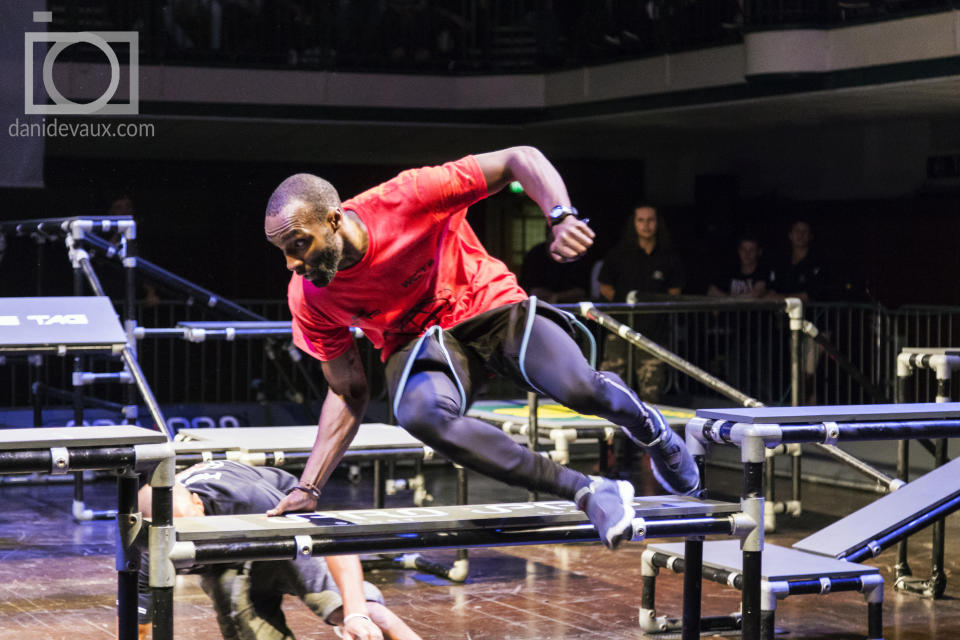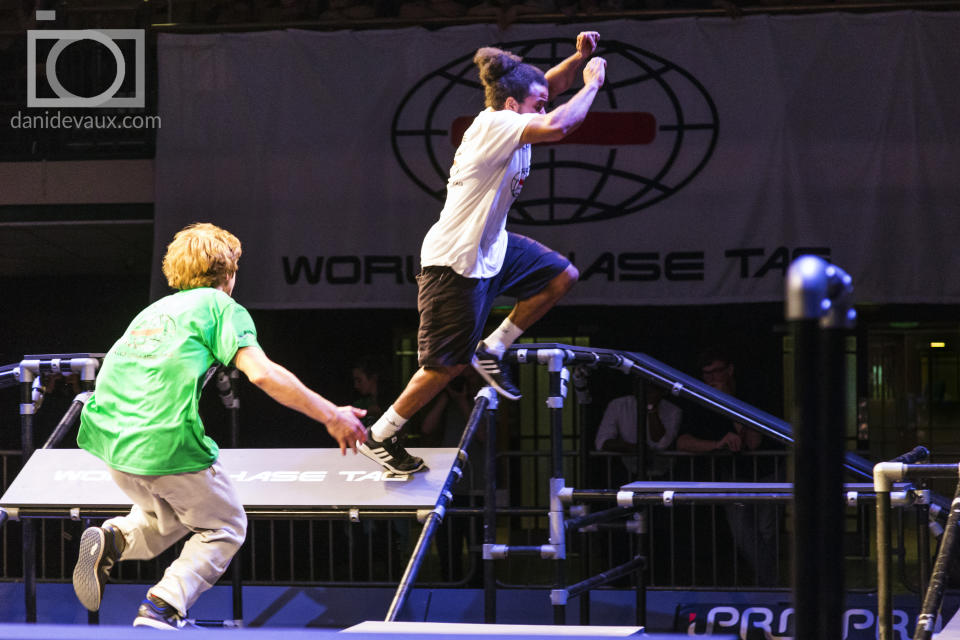Chase Tag: A childhood favorite is now a sport in the UK
Chase Tag, like many revolutionary developments, came out of a childhood game.
Christian Devaux spent much of his adult life working in the hotel industry, and he found that he could entertain and bond with his son by playing tag in the gardens of the hotel. As the father-son duo continued their games, the intensity increased, and so did the rules. Soon, they added a timer, and then obstacles. Devaux quickly discovered that the classic game of tag, an activity he frequently played with his son just for fun, could be turned into a worldwide sporting event.
The idea of national tag mimics the mission of “American Ninja Warrior”: inspire people to challenge themselves, have a little fun and build a community of friends. However, Chase Tag athlete Andy Tomin draws a clear distinction between the two competitions.
“The difference between Ninja Warrior and Chase Tag is that the obstacles are set for you [in Ninja Warrior],” Tomin said. “Here [in Chase Tag], you have obstacles, but you have to adapt to your opponent because your opponent is a live human being and has his or her own thoughts. You have to adapt to that, you have to go around that, there is no set way of doing things. You’re in the moment, and you have to stay in the moment until the end.”

The interest in Chase Tag began after a local game in London’s Hyde Park, and, through word of mouth, the sport has drawn more and more participants including Tomin and his team members. Interest has grown so much that Devaux created a page on his website to allow athletes sign up for teams and compete at a high level. Devaux’s ultimate goal is simply to build a network of athletic individuals who help make the game more interesting to the average person.
“The wider pool of people we can get involved, the more techniques and tactics are going to improve,” said Devaux. “In 10 years time, when kids have grown up playing the sport, it’s just going to get better and better, as people’s experience improves, the quality of athletes would improve.”
Tomin, however, isn’t going to wait 10 years for the sport to reach a higher level. The UK native has already started competing and considers himself and his team to be near “the top of the food chain” in the sport of Chase Tag.
“Our training is pretty harsh,” Tomin said. “I impose myself to a very vigorous training, maybe even a little bit dangerous, I don’t want to lose my edge.”
THE INS AND OUTS OF CHASE TAG
The sport is played in 20-second bursts, in a style that Tomin describes as “parkour, in the purest sense of the word.” Two players take to the court, one from each team, and one player is designated as the evader. With the clock ticking, the evaders goal is to avoid being tagged, and if he or she succeeds, his or her team earns a point. The players race over obstacles like poles and ramps to avoid being tagged, and at the conclusion of the match, the total points are added up. The team with the most successful evasions, wins.
In the tournaments that Christian and his brother, Damien, have arranged so far, teams must qualify to play in the final rounds, and Tomin said that such an organization requires teams to be strategic with who they put on the floor. The game, Tomin said, is as much a mental challenge as it is a physical one.
“We analyze our opponents, we analyze our own strengths, and then we decide who is going to compete based on that,” Tomin said. “In the qualifiers, my team barely put me on the field because they were saving my energy up against a tougher team, and it prevailed, so that was a good tactic.”

The only team to beat Tomin’s team is a group named MG managed by Kieren Owens, an athlete who has been competing in Chase Tag for over a year. Owens says his team stays dominant by having the right mentality and thinking about the game in depth. He agreed with Tomin that Chase Tag is just as much a physical challenge as it is a mental challenge. Together, Owens and his team train for the rigors of Chase Tag and remind skeptics that this sport is not just for amateurs.
“I think a lot of people think Chase Tag is easy because it’s something we all did as kids. And while this has some truth, the level that we are performing Chase Tag at is not only difficult but dangerous,” Owen said. “It’s one thing to run after your mates in an open environment but completely different when you have a highly skilled athlete trying to run you down at full speed in an enclosed arena.”
Chase Tag has taken off in the UK, and Owens credits the success of the sport to the Devaux brothers. Those two leaders, he said, have helped the sport spread, and he expects it to grow even more, and advance to a professional stage.
“I see it becoming a professional league, but what I find very interesting is that it is a new sport which has been born and made possible due to internet culture,” Owen said. “Because of this, it will also evolve with technology a lot quicker than traditional sport. I believe it will be streamed to massive audiences online and keep growing.”
More from Yahoo Sports:
• Protests continue during national anthem in Week 4
• Michael Lee: The NBA should allow players to take a knee
• O.J. Simpson released from Nevada prison
• Following protests, NFL owners searching for control



